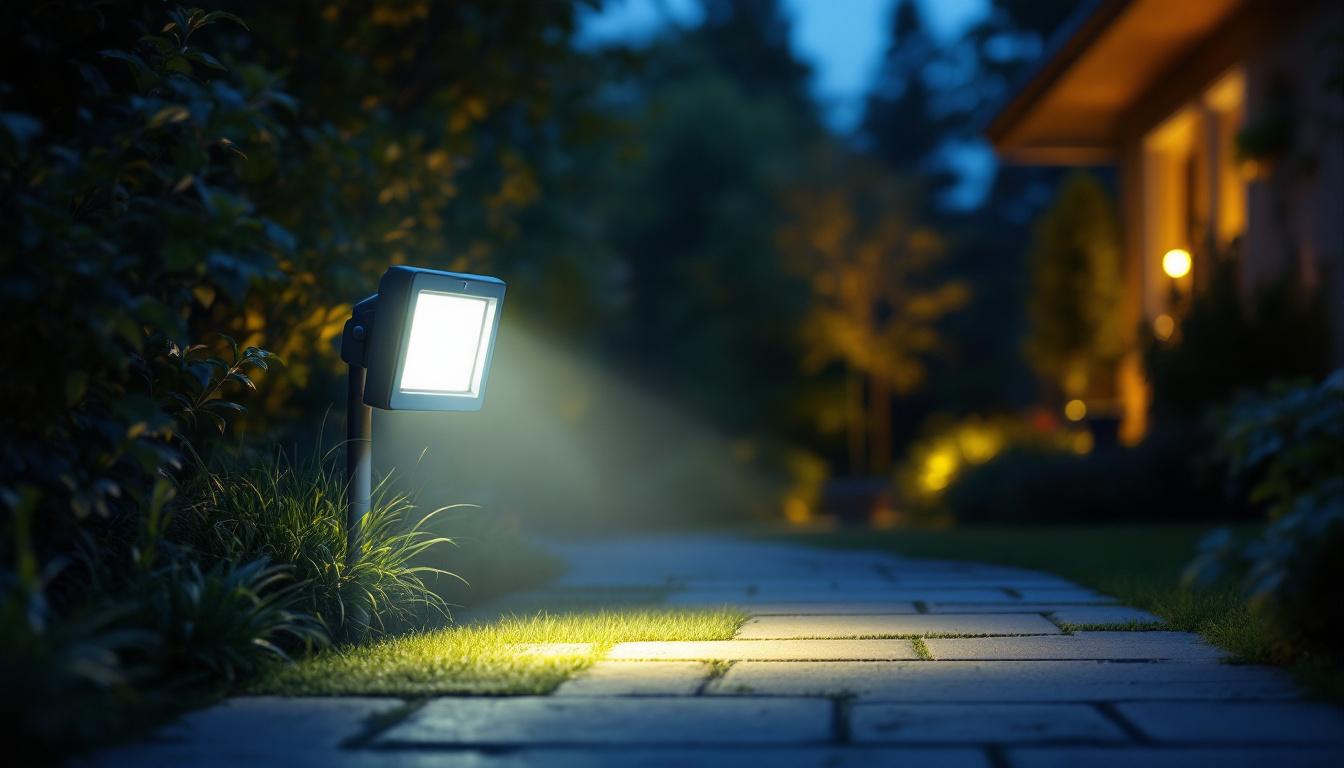
Floodlight motion sensors have revolutionized outdoor lighting solutions, providing enhanced security and energy efficiency. These devices automatically activate lights when they detect movement, ensuring that areas remain illuminated when needed and conserving energy when not in use. For lighting contractors, understanding the intricacies of these systems is essential for delivering optimal solutions to clients.
Floodlight motion sensors can be categorized into various types, including passive infrared (PIR), microwave, and dual technology sensors. Each type has its unique advantages and applications, making it crucial for contractors to choose the right option based on specific project requirements.
Passive infrared sensors are the most common type, utilizing heat signatures to detect movement. They are highly effective for residential applications, where they can be used to illuminate driveways, gardens, and entrances. Microwave sensors, on the other hand, emit microwave signals and detect changes in frequency caused by moving objects. These sensors are ideal for larger areas and can penetrate obstacles, making them suitable for commercial installations.
Dual technology sensors combine both PIR and microwave technologies, offering increased reliability and reducing false alarms. This hybrid approach is particularly beneficial in environments with varying temperatures or where animals might trigger a single technology sensor.
In addition to their primary functions, many floodlight motion sensors come equipped with adjustable sensitivity settings and timers, allowing users to customize their operation based on specific needs. For instance, a contractor might recommend a sensor with a longer timer for a secluded entrance that requires extended illumination time after detecting movement, while a high-traffic area might benefit from a shorter timer to prevent unnecessary light activation. Furthermore, some advanced models are integrated with smart home systems, enabling users to control their outdoor lighting remotely via smartphone apps, enhancing convenience and security.
Installation considerations also play a significant role in the effectiveness of floodlight motion sensors. Proper placement is crucial; sensors should be positioned to cover the most vulnerable areas while avoiding obstructions that could block their field of view. Additionally, contractors must account for environmental factors such as wind, rain, and snow, which can affect sensor performance. By conducting a thorough site assessment and understanding the unique characteristics of each installation location, contractors can ensure that the chosen motion sensor provides optimal coverage and functionality.
Incorporating floodlight motion sensors into lighting designs offers numerous benefits, enhancing both functionality and efficiency. For contractors, understanding these advantages can help in presenting compelling proposals to clients.
One of the primary benefits of floodlight motion sensors is the enhanced security they provide. By illuminating dark areas when movement is detected, these lights deter potential intruders and create a safer environment for homeowners and businesses alike. The sudden activation of bright lights can startle trespassers, prompting them to reconsider their actions.
Moreover, the presence of motion-activated lights can serve as a visual deterrent, signaling to potential criminals that the area is monitored. This added layer of security can be a significant selling point for clients looking to protect their properties. Additionally, many modern floodlight motion sensors come equipped with advanced features such as adjustable sensitivity settings and customizable light durations, allowing homeowners to tailor their security measures to fit their specific needs. This adaptability ensures that the system is effective without being overly sensitive, reducing the chances of false alarms caused by pets or passing wildlife.
Energy efficiency is another key advantage of floodlight motion sensors. Traditional outdoor lighting systems often remain on throughout the night, leading to unnecessary energy consumption. In contrast, motion sensors ensure that lights are only activated when needed, significantly reducing electricity costs.
For clients who are environmentally conscious or looking to lower their utility bills, this feature can be particularly appealing. By presenting energy-efficient solutions, contractors can position themselves as responsible and forward-thinking professionals in the lighting industry. Furthermore, the integration of LED technology with floodlight motion sensors amplifies these energy savings, as LEDs consume significantly less power than traditional incandescent bulbs and have a longer lifespan. This combination not only minimizes the carbon footprint of a property but also lessens the frequency and cost of replacements, making it a win-win for both the environment and the homeowner’s budget.
Selecting the right floodlight motion sensor involves several considerations. Each project may have unique requirements, and understanding these factors can help contractors make informed decisions.
The detection range of a motion sensor is a critical factor to consider. Different sensors have varying ranges, typically measured in feet. For residential applications, a range of 30 to 50 feet is often sufficient, while commercial properties may require sensors with a longer detection range to cover larger areas.
Contractors should assess the specific layout of the property and the areas that require illumination. Ensuring that the selected sensor can adequately cover these zones is essential for maximizing effectiveness.
Many modern floodlight motion sensors come with adjustable settings, allowing contractors to customize the sensitivity, duration, and light intensity. Sensitivity settings enable users to control how easily the sensor detects movement, which is particularly useful in environments where small animals might trigger the lights unnecessarily.
Additionally, adjustable duration settings determine how long the lights remain on after activation. This feature allows for flexibility based on the specific needs of the client, enhancing user satisfaction and system performance.
Contractors should also consider the direction of prevailing winds and potential sources of movement, such as driveways or pathways, to ensure that the sensors activate only when necessary.
When installing floodlight motion sensors, proper wiring and power supply are paramount. Depending on the model, these devices may require hardwiring or can operate on battery power. For hardwired systems, ensuring that the wiring is correctly installed and meets local electrical codes is essential for safety and functionality.
For battery-operated sensors, contractors should inform clients about the expected battery life and maintenance requirements. Regular checks and replacements will ensure that the system remains operational and effective over time.
Floodlight motion sensors are an invaluable addition to outdoor lighting solutions, offering enhanced security and energy efficiency. For lighting contractors, understanding the various types, benefits, and installation techniques is crucial for delivering effective solutions to clients. By staying informed about the latest technologies and trends, contractors can position themselves as experts in the field, providing clients with the best possible lighting solutions.
As the demand for smart home integration continues to grow, contractors should also focus on how these systems can work together to create a seamless user experience. By leveraging floodlight motion sensors effectively, contractors can enhance their service offerings and build lasting relationships with clients, ensuring satisfaction and continued business.
Ready to elevate your lighting solutions with the best floodlight motion sensors on the market? At LumenWholesale, we provide contractors like you with the highest quality, spec-grade lighting products at prices that can’t be beaten. Say goodbye to local distributor markups and hello to our extensive selection that meets rigorous industry standards. Plus, with free shipping on bulk orders, you can stock up on premium lighting without any hidden fees. Don’t compromise on quality or value—choose LumenWholesale for a seamless blend of affordability and convenience. Start enhancing your lighting projects today by visiting Wholesale Lighting at the Best Value.

Discover innovative strategies to ensure your lighting projects stand the test of time.

Discover the essential checklist for lighting contractors transitioning from fluorescent to LED systems.
Explore the key challenges lighting contractors face when integrating solar lamps from Home Depot into residential projects.

Discover how lighting contractors can enhance their projects and boost client satisfaction with the innovative use of LED wall lamps for outdoor spaces.